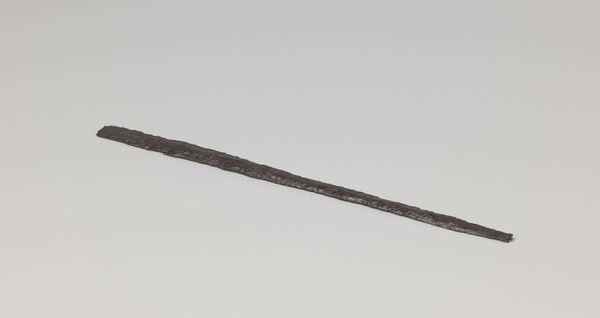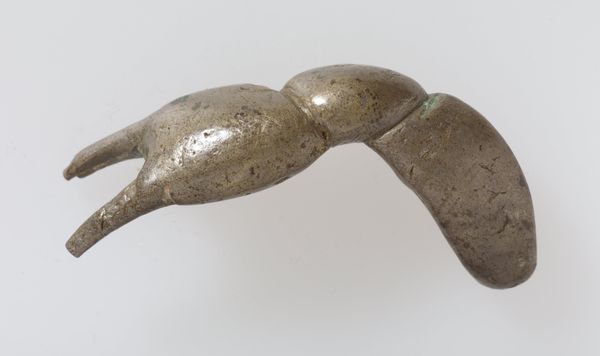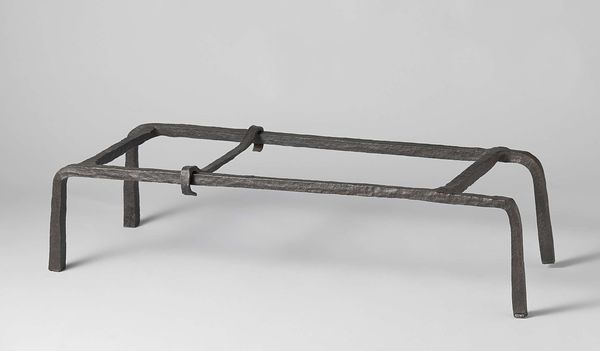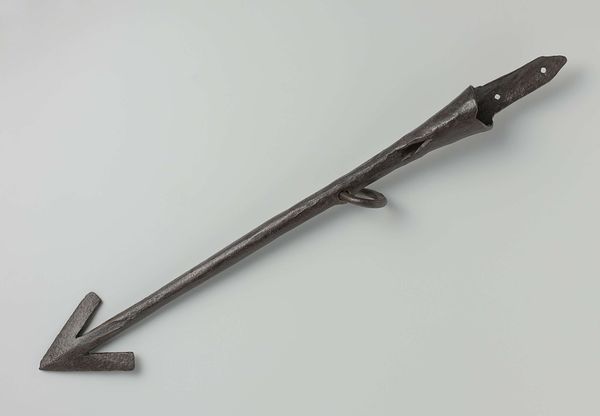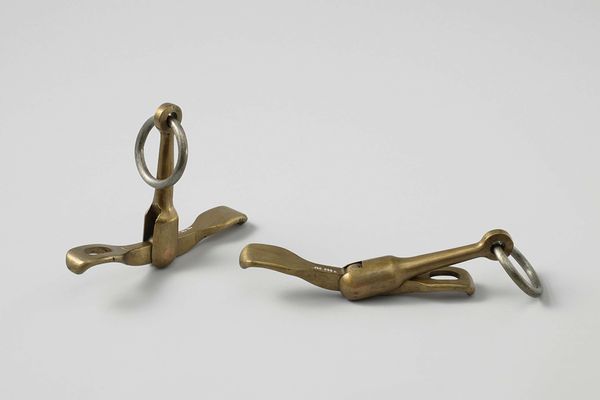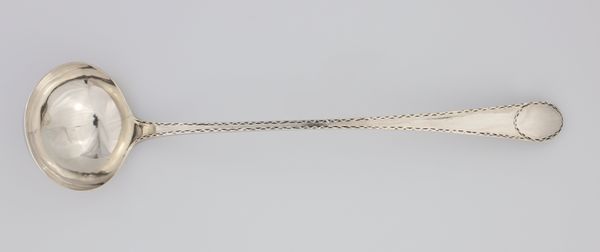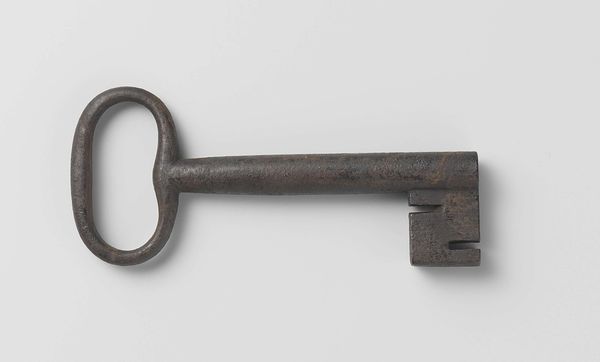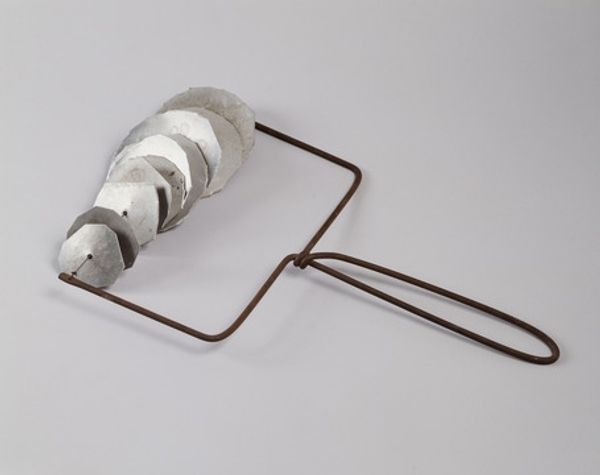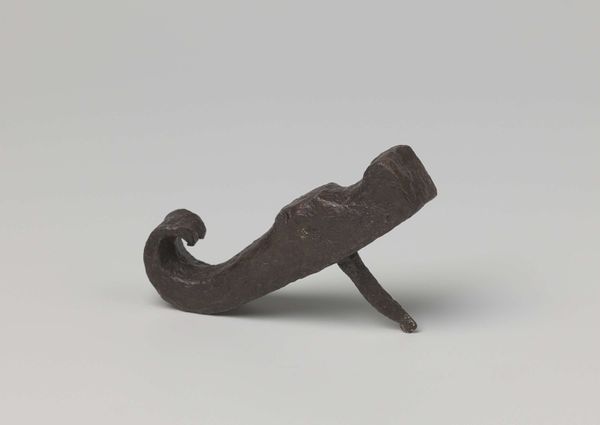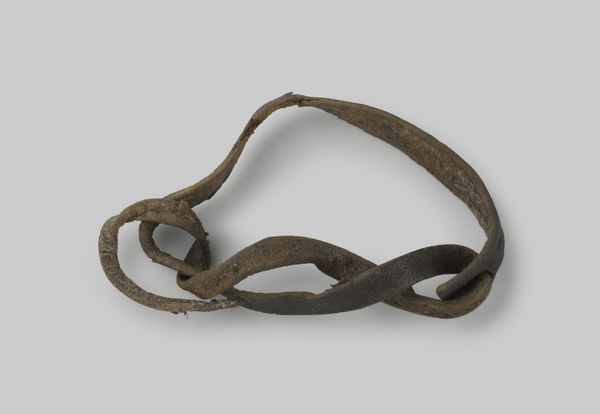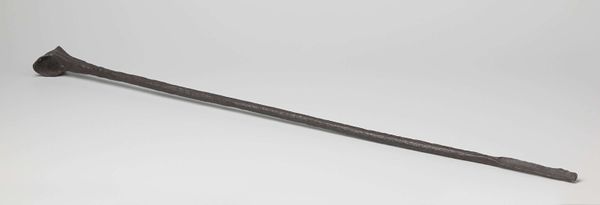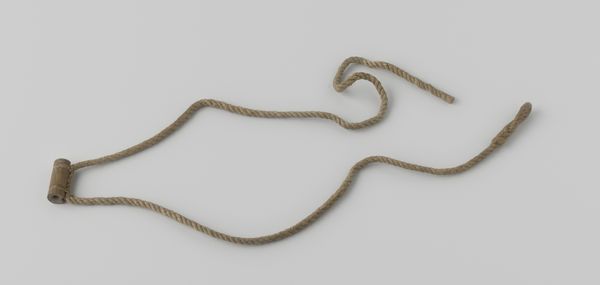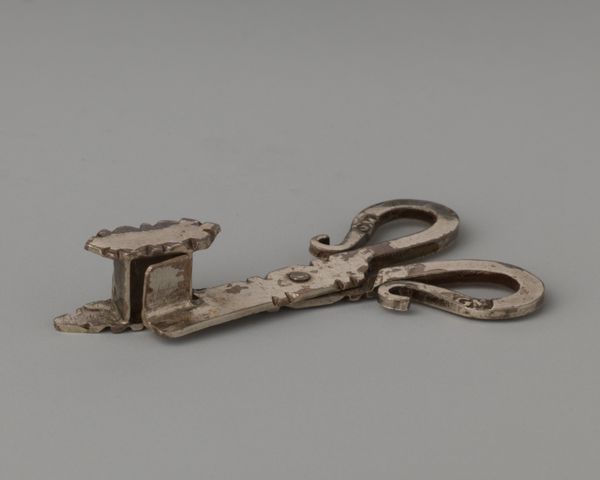
metal, sculpture
#
metal
#
form
#
11_renaissance
#
geometric
#
sculpture
Dimensions: length 43.4 cm, width 7.1 cm, depth 5 cm, diameter 5.5 cm, diameter 5.7 cm
Copyright: Rijks Museum: Open Domain
This chain, with its six links and flattened balls at either end, was made anonymously and sometime before the present day, of iron. The material itself is key to its meaning. Each link would have been forged individually, hammered and shaped while red hot. Even the balls were likely formed through laborious handwork. You can imagine the rhythmic clang of the blacksmith’s hammer, a sound central to pre-industrial life. The iron’s inherent qualities of strength and malleability allowed it to be formed, but its weight also speaks to the effort involved in its making. Chains like this were essential for many kinds of work, from agriculture to construction, and are associated with notions of binding and constraint. Considering the labor and social context embedded in this simple object helps us appreciate the artistry of everyday things, and challenges our assumptions about what deserves our attention in a museum.
Comments
No comments
Be the first to comment and join the conversation on the ultimate creative platform.
